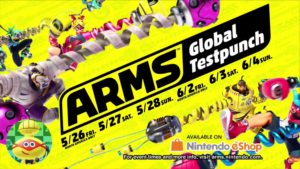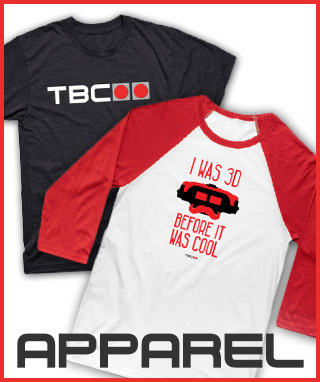
Star Fox Zero was kind of a disaster.
Miyamoto was tasked with leading the development of a game that would prove the Wii U GamePad’s worth—a controller that featured dual analog sticks, NFC, all the face and shoulder buttons you could ask for, and… oh yeah, a second screen.
The master chef was given an armful of ingredients and told that he had to use them all, and what we got was not very tasty. The result:
Complicated controls. Star Fox games used to be played with a single analog stick that controlled the vehicle’s movements (in all directions) as well as the aiming at the same time. In fact, the SNES accomplished this with only a D-Pad before the 64 version! The Wii U sequel(?) suffered from too many input methods when controls were spread out across both analog sticks and the gyroscope motion controller. It was simply too many leaps at once.
The game was built around its “unique” control scheme and the types of puzzles that accompanied. Some interesting new ideas were birthed, and yes, players could overcome the learning curve and pilot effectively using the GamePad… even enjoy themselves… but for everyone who mastered the game, three other players were turned away by its obtuseness.
Rehashing of story & scenarios. The developers under Miyamoto (with help from Platinum Games) put so much effort into the mechanics of this new Star Fox entry, that they neglected the storytelling and presentation aspect, opting yet again to return to the tired tale of Fox moping about his Dad, Peppy insensitively bringing him up, and killing Andross. The title “Zero” was meant to convey that this was not a true prequel or sequel, but a reimagining of the original.
The developers put so much effort into the mechanics of Star Fox Zero, that they neglected the storytelling and presentation aspect.
And at the end of the day, the gaming industry talked about Star Fox Zero for a few weeks. It got some good reviews from those who put up with its controls, got some bad reviews by the people who did not get it, and then people moved on. It had “zero” staying power, so to speak.
Nintendo fans had been asking for more Star Fox, but we didn’t like the game that we got.
A deeper problem becomes clear: Sometimes, Nintendo will not make a game until they have a concept that uses their controllers in an “interesting” way.
Don’t believe me? This is exactly what is happening with games like F-Zero right now.
An unfortunate quote from the mouth of Miyamoto: “If we create a new type of controller interface, and we find a controller interface that’s particularly suited for F-Zero, then maybe we’ll do something with it in the future.”
This is a problem.
Mechanics-first development lends itself to some glaring issues…
Gimmicky games. There is only so much you can change about how video games are controlled over the span of a few decades. Sure, there is more than one way to skin a cat, but there are not unlimited ways. Analog sticks and buttons have become a mainstay in gaming for a reason: they’re good. Standard controllers have reliable, fast, easy methods of input that do not require huge learning curves. Sticking with the status quo allows players to forget that there is a controller in their hands and become immersed in the game itself. That immersion could manifest in a sense of awe at the world around their character, or even within the game’s story (if the game has a decent story worth paying attention to, that is).
Abandoned franchises. Keeping a control scheme is no reason not to create a sequel. It is absurd.
Nintendo has one of the most valuable stables of intellectual properties and franchises on the planet, yet they historically do not give proper franchise care across the board. Games like the aforementioned F-Zero have not seen a sequel in a decade, and games like Metroid were experimented on so hard that the resulting explosion left the series locked away (until this year’s miraculous E3).
I appreciate Nintendo as innovators. Their foray into the early days of motion-control on Wii paid off with interesting new physical mechanics, and mixing up the Mario formula in Galaxy 1 & 2 resulted in some mind-bending gameplay mechanics.
My advice to Nintendo would be: “Hey—when you have a creative new take, act on it. When you don’t, that’s okay too! Still make games!”
Denying sequels without new mechanics is a double standard. Nintendo does not always adhere to this mechanics-first mantra… they will quickly break it, in fact, if a franchise is printing enough money. New Super Mario Bros. and its rapid accompaniment of successors, much? Fire Emblem and its similarly-played versions, anyone? The Big N did not hold those games back for innovative sentiment.
And I am glad they didn’t, because as Nintendo fans… sometimes we just need MORE of the SAME!
Like Advance Wars.
Like Pikmin (of the “not hey” variety).
The only reasonable conditions that I can see for creating a traditional follow-up are:
- Include improvements over the last game.
- Improve the PRESENTATION! (storyline, art style, you know… the things Nintendo usually recycles).
I will address one last thing here: If Nintendo gave us “more of the same,” we wouldn’t have Breath of the Wild.
Good point! This is different: Prior to the revolution of open-world Zelda, the series’ formula was perfected.
Nintendo, Make sequels with the same mechanics until the formula is perfected, THEN innovate!
You will know when the formula is perfected because fans will stop asking for more and they will ask for a change.




